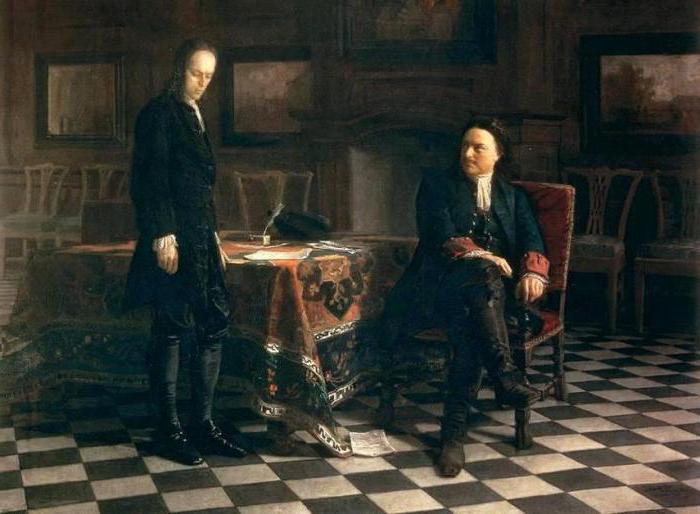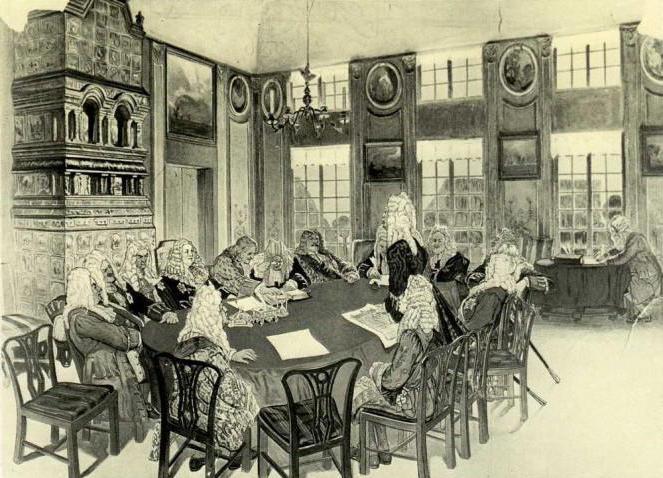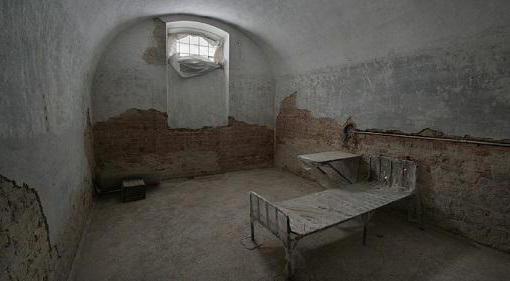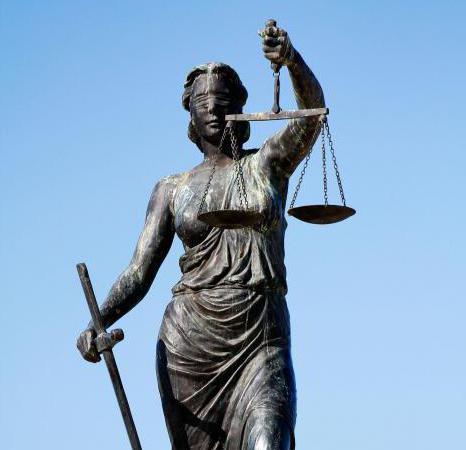In 1719, Peter I launched a reform aimed at removing the courts from the control of local administrative bodies. Its necessity was dictated by the oppression that bureaucracy everywhere perpetrated against the merchants and the bourgeois class that was emerging in the country. The idea of separation of powers, which formed the basis of the judicial reform of Peter the Great, was borrowed by him in the West and did not correspond to the conditions of Russia of the 18th century. In this regard, progressive in nature, it hardly fit into the realities of Russian life.
A necessary but premature initiative
Difficulties in implementing reform were mainly due to the fact that by the beginning of the 18th century, feudal foundations in the countries of Western Europe were rapidly decaying under the onslaught of an actively developing bourgeoisie. In Russia, this new class at that time was still extremely weak and could not take full advantage of the benefits provided by the creation of a court independent of bureaucratic arbitrariness. Thus, one of the minuses of the judicial reform of Peter 1 is its prematureness and inconsistency with the historical conditions of Russia in the first quarter of the 18th century.
Even before the start of the reform, the sovereign had taken a number of measures aimed at streamlining legal proceedings in the country. In particular, he established the Justits College, which was the highest court of appeal in civil and criminal matters. In addition, court courts were created in the provinces, and lower courts in the provinces.
Higher and lower courts of the state
Describing briefly the judicial reform of Peter 1, let us dwell on its main provisions. So, according to the rules introduced in 1719, all the most important legal issues were considered personally by the king. He was also the head of the state judicial system. It is known, for example, that the sovereign himself conducted an investigation in the case of his son Alexei and passed a death sentence on him. This episode is captured in the famous painting by N. N. Ge, a reproduction of which is given below. To help himself, the monarch could create “chancellery investigations”, which locally investigated crimes and helped him clarify the circumstances of the largest property lawsuits. According to the regulations adopted as a result of the judicial reform of Peter 1, they were also assigned judicial functions.
In the event of legal claims against the chief lawyers of the state ─ the Chief Prosecutor and the Prosecutor General ─ only the emperor could consider their cases, since, as was said above, he was the highest court. The Senate ranks below him. He served as an appellate body that provided explanations to lower courts, and also examined a certain category of cases. So, the senators themselves were guilty of it, convicted of various official crimes. The Senate included the Justice College, which administered all the courts in Russia, as well as examined appeals filed with respect to decisions made by court courts.

The main provisions of the judicial reform of Peter 1 and established the procedure for local proceedings. It was supposed to be carried out by the courts of two levels ─ lower and court. The presidents of the latter could only be governors and vice-governors. Cases from the lower courts were referred to them in cases where, in the opinion of one of the parties, the decision was made with partiality. Likewise, death sentences imposed by the lower courts were in all cases subject to approval by the court of the courts.
The role of the Senate in the consideration of the most important cases
Among other things, the significance of the judicial reform of Peter 1 was to expand the powers of the Senate. It is curious to note that almost all of its colleges, with the exception of only one that was in charge of foreign affairs, through their representatives on the ground, performed one or another judicial function.
For example, in dealing with cases of embezzlement of state funds (embezzlement of money), the so-called cameramen have always been involved ─ officials of the Chamber College, which was in charge of finances, and the Zemstvo commissars dealt with runaway peasants. Assistance in this was provided by local governors.
Also, the bodies of the Senate were two sadly memorable institutions ─ the Secret Chancellery and the Preobrazhensky order, which were involved in the investigation of political crimes and had judicial powers. They were called upon to exercise control over the general loyalty of the existing regime and to eradicate any manifestations of freethinking at an early stage.
Difficulties in transforming the judiciary
Speaking about the pros and cons of the judicial reform of Peter the Great, they usually point out that it largely illustrates the eternal Russian principle, brilliantly formulated at the end of the 20th century: “We wanted the best, but it turned out as always.” The fact is that the real power in the field was primarily owned by the governors and a narrow circle of closest people. It was to them that I had to turn to appeal against decisions of not only lower, but even court courts. That is, in practice, the final court decision still depended on the arbitrariness of local officials, who did not always take into account the letter of the law.

This state of affairs has created fertile ground for the most flagrant abuses on the part of governors who unceremoniously interfered in the administration of justice. The intensified chaos in relations between local authorities and courts intensified, leading to the fact that in the period 1722-1727. individual articles of the judicial reform of Peter 1 were amended. In particular, the sovereign abolished the court and lower courts, transferring their functions to governors and assessors (assessors). Thus, the local administrative and judicial authorities were in the same hands, which served to further strengthen bureaucratic arbitrariness.
The only exceptions were cases involving political issues: they, as before, were subject to consideration by the Secret Chancellery, and in especially serious cases, the emperor personally made decisions on them. In addition, a special judicial system existed in the Baltic states, Ukraine, as well as in a number of Muslim regions under the jurisdiction of the Russian monarch. It is generally accepted that the outcome of the judicial reform of Peter 1 as a whole was very disappointing. Not providing citizens with the opportunity to legally uphold their interests, she created favorable conditions for corrupt officials.
Laws that have become tools to suppress freethinking
We should also dwell on the change in the general practice of legal proceedings carried out as a result of the reform. The fact is that in the initial period of the reign of Peter I in Russia, it was an adversarial process. Its principle was that in making decisions, evidence provided by both parties was considered. The members of the court themselves did not take part in the investigative measures.
This order has existed since ancient times and took the form of a tradition fanned over the centuries. However, the judicial reform of Peter 1 was carried out at a time when Russian society was embraced by the next wave of class struggle, which was an inevitable consequence of the collapse of the former feudal foundations, the last link of which was absolutism. In these historical realities, the sovereign needed an effective mechanism to suppress any attempts to change the existing system.
The wave of peasant uprisings that swept through Russia at the beginning of the 18th century was one of the reasons for the implementation of the judicial reform of Peter 1. The instruments it provided to suppress the resistance of the masses, such as the creation of the Secret Chancellery and the Preobrazhensky order, were the result of the ruling class's desire to maintain its position. This trend was reflected in innovations related to issues of legal proceedings.
18th Century Inquisitors
The previous adversarial system, which was mentioned above, was replaced by the investigative, or, as it was often called by contemporaries, reign of Peter I. Now, contrary to tradition, the court was empowered to independently draw up a guilty base of evidence, which significantly reduced the likelihood of acquittals, especially when it came to political crimes, which became more frequent and served as an impetus for the reform of Peter 1.
Briefly, this can be expressed as follows: the court took the form of a repressive mechanism designed to preserve the existing political system in the country, which at that time was an absolute monarchy. Let us dwell in more detail on the features of the search (inquisitorial) process.
Characteristics of the new legal proceedings
First of all, it should be noted that, regardless of what sources the information about certain illegal acts came from, the beginning of the process was initiated by the court itself, that is, by the state. The only exceptions were civil litigation, which began, as in previous times, with the filing of a petition by the plaintiff.
An extremely important fact is that the judges themselves were assigned the duties of investigators. As a result, the data they received was not double-checked, and when considering cases, they were accepted as an indisputable fact. In fact, the goal of the bodies providing the legal proceedings was not to establish the truth and punish the guilty, but to intimidate everyone, aimed at preventing and preventing possible anti-government actions.
As a result, the outcome of the judicial reform of Peter the Great was a widespread practice, in which it was believed that it was better to punish the innocent (so that it would be disgraceful for others) than to pronounce an acquittal. This principle of legal proceedings has long been rooted in Russia and, having survived the era of autocracy, flourished in lush color during the period of mass repression of the 20th century.
Continuation of past traditions
The judicial reform of Peter 1, briefly described above, did not originate from scratch. It was the logical conclusion of previously initiated processes. It is enough to recall the sovereign decree of February 21, 1697, which marked a decisive turn from the deliberative court to the investigative ─ acquisitive in nature. This document, which abolished, in particular, confrontations, established a strict and sometimes extremely biased tracing system.
For example, a judge was given the right to challenge any witness if his testimony could cast doubt on the impending sentence. Moreover, they could well be brought to justice as false witnesses, with all the ensuing consequences, up to the death penalty, first introduced for this type of crime.
A study of the judicial reform of Peter 1 and a number of decrees preceding it shows that they themselves are not a new word in the jurisprudence of that era, but merely serve as a continuation of the tradition established many centuries ago. Such forms of search, which secretly existed back in the era of the Rurikovich, received in this case a legal justification and were elevated to the rank of law.
Code of acts of 1716
Another important document that is directly related to the content of the judicial reform of Peter the Great is the “Brief Image of Processes” that appeared in 1716 ─ a set of normative acts determining the actions of civil courts in the light of laws established by the Military Article. There is a very erroneous opinion that this decree extended the effect of the military charter to civil courts. In fact, this is not entirely true. In it, it was only prescribed to the judicial authorities when considering cases, one way or another connected with the army, to be guided by the charter articles, but not to extend their effect to civilians. Of course, one of the advantages of the judicial reform of Peter 1 was the distinction between these two areas of legal proceedings.

The legislative document, which appeared in 1716 and was also part of the general reform, played a significant role in the establishment of new institutions in the procedural law of Russia. First of all, its provisions governed the country's judicial system itself. In addition, for the first time, the concept of litigation was clearly defined in it and its main types were identified.
It was further specified in what cases and to what extent torture was permissible (for the 18th century this was a very topical issue). And finally, a procedure was established for considering evidence, as well as for pronouncing and appealing a sentence. The decision of all these most important legal issues in former times was assigned directly to judicial officials and depended entirely on their arbitrariness. Thus, the development of a common procedural basis for all is an essential plus of the judicial reform of Peter 1.
Characteristics of the judicial investigation
Many researchers draw attention to the fact that most of the regulatory legal acts that appeared in the Petrine era were partially or completely borrowed from Western sources. That is how, for example, military and civil laws were drawn up at that time. However, despite this, all of them were a reflection of the social and political development of Russia at the beginning of the 18th century and were dictated by the demands of absolutism that developed in it. Since in the Petrine era, trials, as mentioned above, had a wanted or, in other words, inquisition form, let us dwell on their main features.
Regardless of what specific sources the prosecution came from, the start of the process was initiated by the state, that is, the members of the court themselves. The only exception was civil litigation, petition for which the plaintiffs themselves filed directly.
Further, all investigative measures were carried out by the judges, and their results were not considered in other instances, which completely ruled out another interpretation of the collected evidence that did not suit them. This practice paved the way for the judges' biased approach to the circumstances of the case.
And finally, the most important thing. A similar investigation procedure turned the accused into a lawless object of court’s activity, which, “investigating the case”, as a rule, resorted to the executioner’s help to obtain the desired testimony. If the person under investigation persisted, then the torment intensified, which sometimes led to his death even at the stage of the investigation of the case.

The use of torture against witnesses and even the scammers themselves was a common occurrence in that era. In this way, the Russian "priests of Themis" checked the truth of their testimonies. It is quite clear that such measures did not serve the triumph of truth, but only the outcome of the trial that was desirable for the authorities. The most important evidence of guilt was considered to be recognition of the defendant, and in this direction the executioners did not spare strength. These principles, established long before the accession to the throne of Peter I, became the basis of the judicial reform that he conducted and were legally enshrined in its articles.
The results of the judicial reform of Peter 1
For all its shortcomings, which were mentioned above, judicial reform at the beginning of the 18th century was an important milestone in the history of Russian jurisprudence. Thanks to her, clearer formulations of most laws appeared, as well as definitions of the main procedural institutions and concepts. In addition, a more harmonious and previously unknown judicial system was established by law. But at the same time, in spite of all efforts, the judiciary failed to get out of the influence of the local administration and free from many remnants of the past.